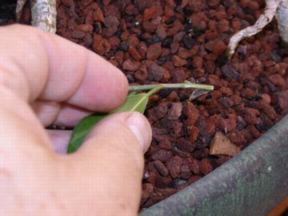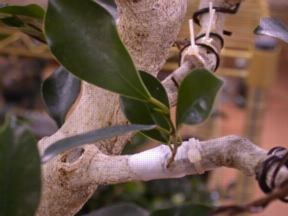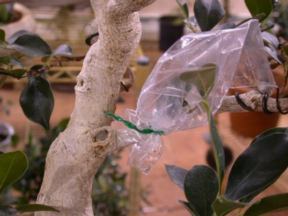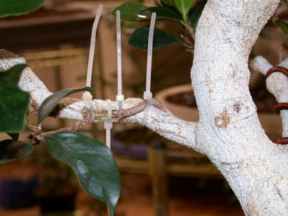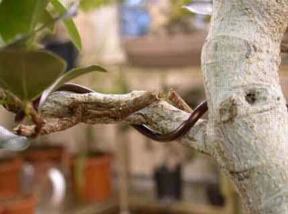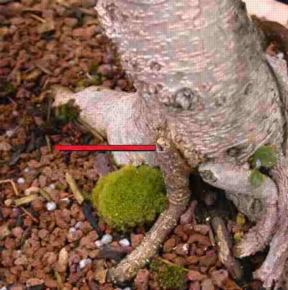
Introduction to Grafting Ficus Grafting is an ancient plant technique that is used to improve a tree by introducing a better fruit, a prettier leaf, or putting a finicky plant onto another tree with stronger roots and trunk. It is also used to propagate rare materials more quickly than waiting until the tree sets seed, and also grafts are genetically identical to the mother tree. In bonsai we generally use grafting to introduce a branch where it is needed, or to place smaller foliage into a tree that has large leaves that are difficult to reduce or to keep reduced. Grafting ficus works well because ficus heal rapidly and grow vigorously so grafting is really quite easy and successful. Grafts that are most used are free grafts, and in-arch or approach grafts. Types of Grafts 1. A free
graft is a small branch with 3-6 leaves on a woody stem that
is cut free from the donor tree and then grafted into the host
or recipient tree.
2. In-arch
or approach grafts involve using a long and superfluous branch
that is shaved to expose the cambium layer and then positioned
into the area on the tree where the new branch is desired. Again
the cambium layers of host and graft are matched as closely as
possible. The graft is not removed from its attachment to the
plant until the graft is growing strongly.
Approach grafts may be used with the donor and host being on the same tree, as shown above, or it is also possible to use a small potted fig donor that is brought close enough to the host tree to be grafted. The donor pot must be firmly secured so it doesn't tear the graft loose when accidentally bumped. The graft is not cut off until the graft has taken and is growing vigorously. General guidelines for grafting Very healthy
trees - both host and recipient. Further information on grafting may be found by reading the wonderful information contained in Bonsai Clubs International Vol 40, No. 4, pg. 21-24 2001. Bonsai Master Chiang has lectured and demonstrated his grafting and bonsai skills internationally and won many bonsai awards for his trees which include many superb ficus. |
